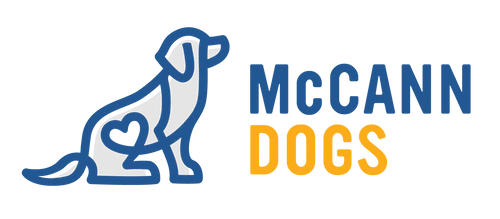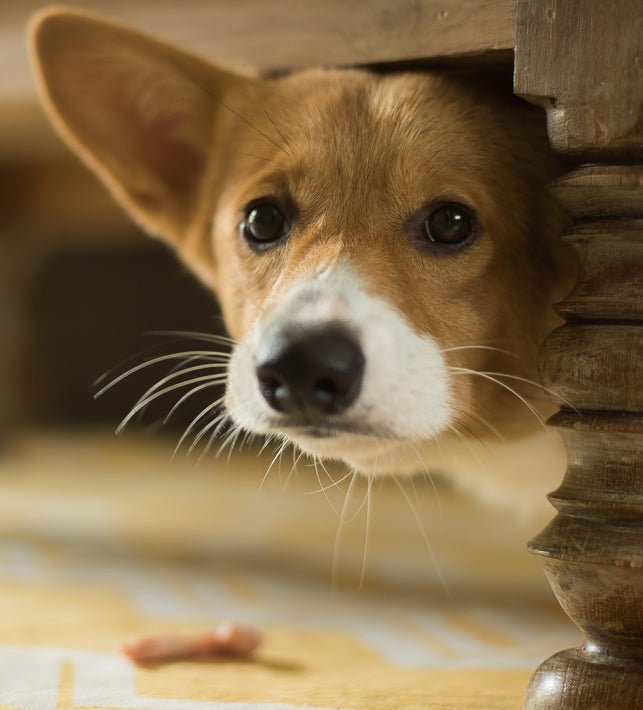Well, it's been a while since I've had time to write and I've missed it very, very much.
We've been so busy with COVID related concerns, that it's taken a back seat, but I was inspired this morning when answering daily questions in our Puppy Essentials Online Training program. There was a common theme about trying to help puppies overcome noise. Pups were presented with 'the noisy thing' (hair dryer, sander, loud truck, etc.) and frightened by it.
Then the question of how to acclimate.
Well, it is truly putting the cart before the horse to present the scary thing, scare the pup with it and then try to reverse that fear, so let’s talk about how to introduce things in a way that we’ll avoid that fate.
Raising a puppy definitely requires the gift of foresight to do perfectly. We don't always know that there will be a loud truck or a crack of thunder or a sudden fireworks display, so we can forgive ourselves when we are caught unaware by things outside of our control
The rest of it, you’re not off of the hook for. Anything predictable, like turning on a hair dryer or a set of clippers to trim a coat, should be approached delicately with the assumption that it will frighten a youngster without experience with it. If it seems like it might be scary for them, it is likely a safe assumption that it will be, so take your time and plan. Do not flood your puppy!
First, let's define flooding: "Flooding is a full immersion training technique applied both in humans and animal psychology. It consists of forcefully exposing the dog to the stimuli that triggers its fear and caused the original trauma."
So, to put this in perspective, our commonly used analogy is to present you, a person afraid of spiders, with the opportunity to hang out in a room full of benign, but scary spiders. Over time, the idea of keeping you locked down with these spiders, is meant to help you learn that since nothing bad has occurred, you can now get over your fear of spiders. Sounds reasonable, right?
Now, think of the thing you fear and tell me, how does that sit with you? Do you think you'll learn to be less frightened of spiders now? More? Do you think more time spent in a room full of spiders will remove your fears or will you shut down and exist in a state of learned helplessness until you are freed from the room of horrors?
Now, picture your pup being introduced to a new stimulus - let's say the hair dryer. When you turn it on and point it at your pup to 'see if they'll be okay with it', you're essentially flooding them.
I can tell you with confidence that the majority of pups experiencing something like a hair dryer like this for the first time will DEFINITELY be overwhelmed by it and will likely respond with fear. Depending on their temperament, this may create a momentary blip or a life long phobia.
Continuing to press will be much less likely to result in your pup being okay with the scary thing. Allowing them to panic and flea will only add to their fear as running, in their minds, will keep them safe. Both of these things will only set you back in your training.
In order to help your pup get used to something that will undoubtably be frightening to them, you need to start slowly and introduce it methodically. Don't jump right into test mode to see if it's scary.
This flooding will not serve you well at all and is much more likely to create more work for you and more trauma for your pup.
What Would be Better?
How about a BIG room, one tiny little spider WAY on the other side and Birthday cake (cause who doesn’t love it ;o) Now, you get to eat delicious birthday cake while you watch a little spider that’s not that scary - it’s kinda cute - wander around the other side of the room.
Breaking down a scary situation into manageable pieces is a much better way to help your pups acclimate to new and frightening things.
As an example, let’s think about the steps and stages of introducing a hair dryer. How can you do so without overwhelming the pup? How can you create a dog who is tolerant of it and even has a pleasant association with the item? Like Birthday cake and Spiders?
Plan and take your time. Keep your pup from being overwhelmed and build on their understanding that the dryer is a GOOD thing!
Here's an example of a plan to INTRODUCE the hair dryer.
Get out your best high value rewards for the introduction. Initially, just plunk the inactive dryer on the ground and allow your pup to investigate. You want them to take it in - sight and smell. As they investigate, you can praise them for doing so and even mark with YES and deliver a tasty treat close to the dryer if your pup is brave.
We teach a chin rest skill in our Puppy Essentials and Head Start Programs so that our pups learn to be calm and still through grooming. This is especially handy if you have a dog who requires scissoring or trimming. This is a great way to give your dog a job to do while you are grooming, examining or medicating (your vet will love you!)
With my dog in the chin rest position, I would break things down over several days, weeks or even months depending on my pup. Every one of them will adjust at different rates. Starting with the dryer off, I would get my pup used to:
- the dryer being present in view
- the dryer being closer
- the dryer touching different parts of my pups body briefly
- the dryer touching different parts of my pups body for longer periods
All of these steps should come with reward and may take several days or weeks to work through. Steps and stages using food appropriately are important to ensure success without dependence on the food itself. Eventually, we want our pup to accept the hair dryer without the food being there. This is another system that we should wean away from as once our pup learns that the dryer is just another thing and they don't need to be afraid of it, but that will be the last piece of the puzzle, once the pleasant associations are in place. Don’t be in a big rush. Be fair and take the time your pup needs.
Next, got through the above list with the dryer turned on. Because turning the hairdryer on will be a whole new thing for your pup, it should be at a distance to start with. Start on the lowest setting and be sure the rewards are lavish! As you move closer to the pup, remember that you can turn the dryer on for short bursts or longer ones and you can use distance to your advantage to build tolerance and avoid fear.
Watch for signs that your pup is uncomfortable and adjust immediately. If they are pulling to get away, pinning their ears, whining or fussing, you've likely moved too quickly. Break it down further. Take your time working through. It's a marathon, not a sprint and your pup will appreciate it!
As always, Happy Training!

